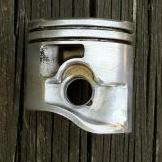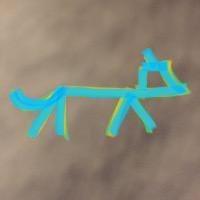All Activity
- Past hour
-
I, for one, hadn't realised quite how important a role trace elements like potassium, phosphorus and nitrogen played in determining the ecology of a habitat. Interesting.
-
Nope that’s a proper mess by the sounds of it, and if confirmed something that has to be lived with. But as you say until those with certain beliefs or ideology stop the indiscriminate violence and killing then these things can tragically happen.
-
Very informative, thanks.
-
mandytl joined the community
-
In view of recent developments regarding the shooting, maybe not tragically. but the fact remains if not for yet another deluded, indoctrinated nutjob, he would not have been required to even raise his gun, or even be there. the decisions he made may well have saved many lives, I'm sure he will be deeply sorry it was not at least one more.
-
openspaceman started following Wildfire of 76
-
I said there was a story behind this picture The heath is a remnant of a larger common that has mostly become developed as the commuter town of Woking was built up. This part to the north of the town is a large open space of over 800 acres. Grazing had largely ceased in Victorian times but it remained a "blasted heath" because of it's sandy soil with leached out fertility. When I was a boy the military still had a lease on the land from WW2 and their antics plus hordes of recreational horse riders and the occasional wild fire had kept it largely devoid of trees. From 1974 I had fallen into forestry work and was an avid member of RFS. At one meeting on Wisley and Chatley heath commons the forester for SCC (the owners there) told us that he was planting up that heath with mostly lodgepole pine. Now by then I had planted lodgepole pine and never seen any that looked likely to produce decent timber, I was also aware that heath, which is mainly man made by over grazing, was becoming a rare habitat. So I spoke up that it should be maintained as heath and not afforested, I was told that was ridiculous and as a major timber importer it was important to have our own timber production. It got planted both sides of the then single carriageway A3 with separated the two blocks, lodgepole and Tsuga to the north . Now 50 years later the A3 dual carriageway is widened to 8 lanes and a green heathland bridge has been erected to link the two heaths, the planted trees have been long gone (and all that planting grant money wasted) as the Thames Basin Heaths project has taken off to preserve heath. Having lost my forestry trainee job after a house move I went back to learn a bit more about dairy farming and volunteered on a decrepit farm with a 72 year old chap and his herdsmen, about this time I met @Deafhead. The farm was bought and subsequently developed into a golf course. By then I had been head hunted by a new IH dealership as a tractor salesman. Here I tinkered with tractors, met a number of local farmers, one the grandfather of a garrulous member here who politely told me not to return, and gradually twigged not only was I a useless salesman but the business was only a front for getting the owner's money out of Zimbabwe. I was sacked. I went back to climbing for one of the major local tree firms, the boss was good but wages and conditions poor so that didn't last, I moved into managing another smaller firm with just two gangs. The owner, a chap of about 40 on his second or third marriage , his manager have run off with his previous wife, came in one morning to complain that his new wife wasn't happy with me and that I had berated an employee for having sharpened his saw below the rakers. Given the ultimatum to apologise or go I was off. I bought some birch for turnery poles and with a college mate we went into the timber felling business. Now to the gist of the story, while a tractor salesman I had met a printer who ran a small holding with liveries and was the part time manager of this common to the north of Woking. Since the army had left 15 years earlier a large number of self seeded scots pine had taken advantage of the nitrogen from car exhausts and coupled with the aid of mycorrhizal fungi extracting potassium and phosphorus from the grains of silica the whole place was becoming a low yield secondary woodland. The bit in the photo was still heath with little to no bracken but the area just beyond was thicket stage pine. Again the proposal was to plough and plant , corsican pine this time. I approached the new owners and suggested this was a bad thing, I still have the wordy letter I sent to explain. I bought some birch thinning from them and worked for them, on a self funding basis for 30 years. Then came the drought of 76 and the wildfire that burned a hundred or more acres, devastated the reptile and probably ground nesting bird population but killed the trees. After looking at the eyesore of standing dead trees the owners agreed to let me clear the land. I worked with a sawmill tidying up after their big hardwood fellers had taken the timber and , for speed as we were often on shooting estates, burned all the small roundwood and tops. So I got the chap that did this with his Cat 977 to rake up and burn the scorched trees, the mound of ash is still there as a clump of gorse. The heahter is good but over mature now and could do with swaling blocks. I think the disturbance of the soil profile was a bad thing, but I was young. The area largely returned as heather in the bit we raked but the potassium from burned trees mean that bracken started encroaching from one roadside. If left un managed it will out compete the heather and take over, much as it has on the Wisley common. A management problem is that all these Thames Basin Heaths have upgrades from SSSIs to SPAs in the 90s, which makes management stupidly restrictive, to the benefit of bracken and the overall loss of heather. The bit where the tractor is working was never heavily treed but was becoming so, it was a wet area in winter with a large number of informal borrow pits. These are difficult to work and have been mostly left to develop as secondary woodland, pine, birch aspen and willow. For some dubious reason rather than cut and carry off the over growth on the machine manageable areas the decision was made to screef off the surface. The arisings were dumped in a field that had developed from 1972 to wood pasture with glorious displays of orchds and that was the end of them. The screefed area is what you see some 10 years later where he exposed layer favoured gorse, finally, where the mower and baler could get, they are taking off the arisings. Over time this lowered surface fertility should favour heather ( ling, crossleaved and bell) as long as bracken is controlled. Strips of gorse have developed alongside paths throughout as the roots partake of phosphorus from dog crap.
- Today
-
nope, not rick parfitt.
-
Ring got forced back into the groove about 1/2 mm, I was surprised there was enough depth in the groove for that to happen.
-
New plug is Chinese and healthy, I think it’s the correct spec al-be-it Chinese. But the fact it’s new might be a clue…. Those bits could be the curved electrode of a plug. If any of the dents in the piston or cylinder were curved in shape that would have been conclusive. But the long dents are straight. Also worth mentioning some of the dents are carboned over.
-
Christmas tree weeding
Tree monkey 1682 replied to charlieb's topic in Forestry and Woodland management
Plantations small or not small used to strim them, any varient of weedkiller will be poisionus to animals and can potentially get passed down , best thing is mechanical its only grass- 1 reply
-
- 2
-

-
Good thinking and apologies for not elaborating - who ever investigated it stopped at the filter. Carb wasn’t removed nor was the cylinder. Plenty of undisturbed sawdust and oil there. That’s the right course of action I’m sure. It’s good enough to warrant getting back to full health.
-
good shout, that main vertical groove looks as if something shaved a chunk out the piston, surprised it never took the ring out, but the resultant debris would give results similar to this.
-
joe povey joined the community
-
Just seen that on the news .
-
You say it had a cheap Chinese spark plug . Was it too long a reach and the bottom electrode snapped off ? ( he said using the quote tab 😀 )
-
Sadly it has come to light that one person was killed and another injured by the police as well as the attacker.
-
It’s there, present and correct. (And finally he uses the quote function to reply to the suggestion 🙄 )
-
it's possible it's not all of the original parts, as you say it looks like it was thrown loosely back together. I had an old pioneer here that looks like it was ran on a mixture of fuel and gravel, that too showed little evidence of bottom end damage too. the black areas of the crank could be the heat treatment from the factory, or maybe a sign of severe overheating, which could have contributed to the resultant wreck. I would completely dismantle it and assess from there. if you got it cheap it could be made into a decent saw again with a little tlc and a few parts.
-
Circlips present and correctly fitted, probably as fitted 30 plus years ago. Carb looks good. Exhaust is cosmetically good condition on outside, all looks carbon grey through the port and exit hole. Something back through the exhaust gets above the piston though.
-
Is it the pin that stops the piston ring rotating in the ring groove ?
-
Looks like Rick Parfitt ?
-
What would you call the basics?
-
Air filter present under the cover but not fitted, just floating about. I wouldn’t be surprised if someone gave up trying to fix it, just threw it back together, top cover screws were loose too. Something dropped down the inlet or fallen off the carb was my first thought - seen this before too. BUT I’m discounting this because there is absolutely no damage below the piston…. not a mark. Am I wrong ? Tillotson carb on it if that helps.
-
I have had a piston look like that first time was piston ring second was circlip holding gudgeon pin in broke up. Your fragments look to big for ether. Are carb butterflies intact. Or if saw has had a knock and metal from exhaust.
-
Was the air filter present and intact, I get a lot of cheap, often free saws that have just been used and chucked back in the shed for years with no maintenance whatsoever, this looks very much the case here. it didn't come from wales did it?













